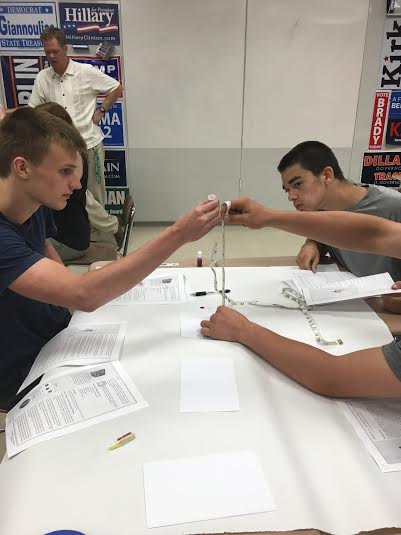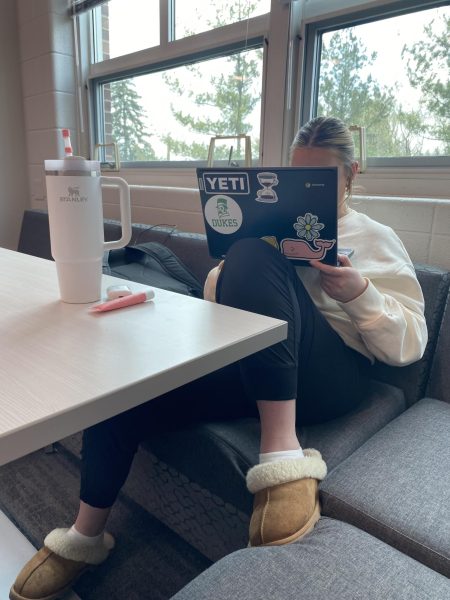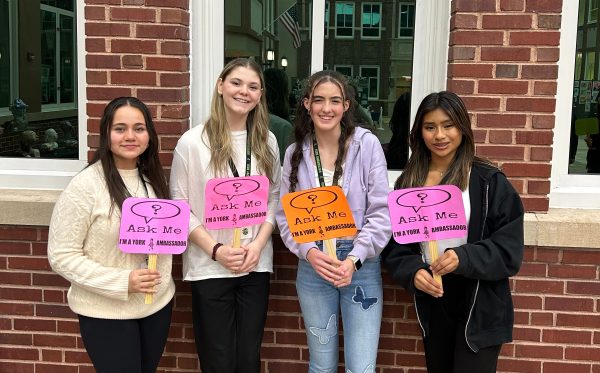Students study the science of crime

In Mr. Dowdy’s Criminology class, students Tyler Gorski (left), 16, and Alex Gianneschi (right), 15, are measuring the length between blood droplets.
Criminology. The study of crime and how it was caused. But why do we, as students who haven’t even stepped out into the real world yet even need criminology? Unless you’re planning on setting off a smoke bomb in the boys bathroom, you shouldn’t really have to care right?
Well, according to Ryan Norkett, one of the two criminology teachers here at York, it’s important for the students and everybody in general to learn the science of criminology.
“It helps with the understanding the social impact crime has on us,” Norkett said. “It can help us understand how instances like poverty can drive people to commit crimes. It allows us to take a step back and look at a crime from multiple points of view.”
Ryan Norkett, along with Ken Dowdy, teach criminology during the summer school periods. They focus on teaching students not only about how to examine a crime scene, but how to study the psychological part of crime so that students can not only find out who a culprit is, but how to study the culprit so that theyĺl know how and if he will strike again.
“I teach this subject because I want the students to be aware of crime so that they can help put a stop to it,” Ken Dowdy said.
Crimes happen all across the world all the time for many different reasons, but there are also crimes that can happen in our very own neighborhood. True, we do live in a neighborhood where very little crime happens; however, some other neighborhoods aren’t so lucky, and need to be aware of the crimes so that they can find out what it was and how to prevent it from happening again.
York establishes its program to teach the up and coming adults about the ways to stop crime in our society. We need people to know that they too can stop crimes with the method of predicting when another crime will happen so that it won’t happen again, therefore keeping our neighborhoods and our country safe from harm.
The Criminal Justice and Criminology Department of the United States released a personal statement that said “People should be aware of the law and the consequences for those prepared to break it, however, the law is still broken,” which suggests the care civilians should have to be aware when the law is broken so that they can stand their ground.
In Criminology classes at York, students also delve into the study crime– not just how to prevent it, but to examine it and solve it, the same way police do in real life.
Mr. Dowdy’s class had the students learning about blood spatters and how they can use it solve a crime, showing how students with a trained eye can reveal from a blood spatter the velocity of the weapon, the number of blows applied with that weapon, the type of injuries, and how long ago the crime was committed. This would help them determine who this murderer might be in real life and would help them pin down a list of suspects to help further murders by the culprit. The students also recreated a diagram of blood droplets to see the length of them apart to tell the things that I just mentioned.
Brian Kunst,sophomore at York, was taking a criminology class after taking forensic science the previous year.
“Criminology is a very interesting course because you learn about how crimes are committed and how people and the police actually solve crimes in real life,” Brian said.
He says more students at York should take criminology.
“I would definitely recommend criminology to upcoming students because it gives you a general knowledge about the criminal justice system and the ways the solve crimes, both with criminology and forensic science,” Kunst said.
With a belief that an understanding of criminology is beneficial to students, York is trying to enforce the growth of awareness within the upcoming students in order to keep them safe in the future.












